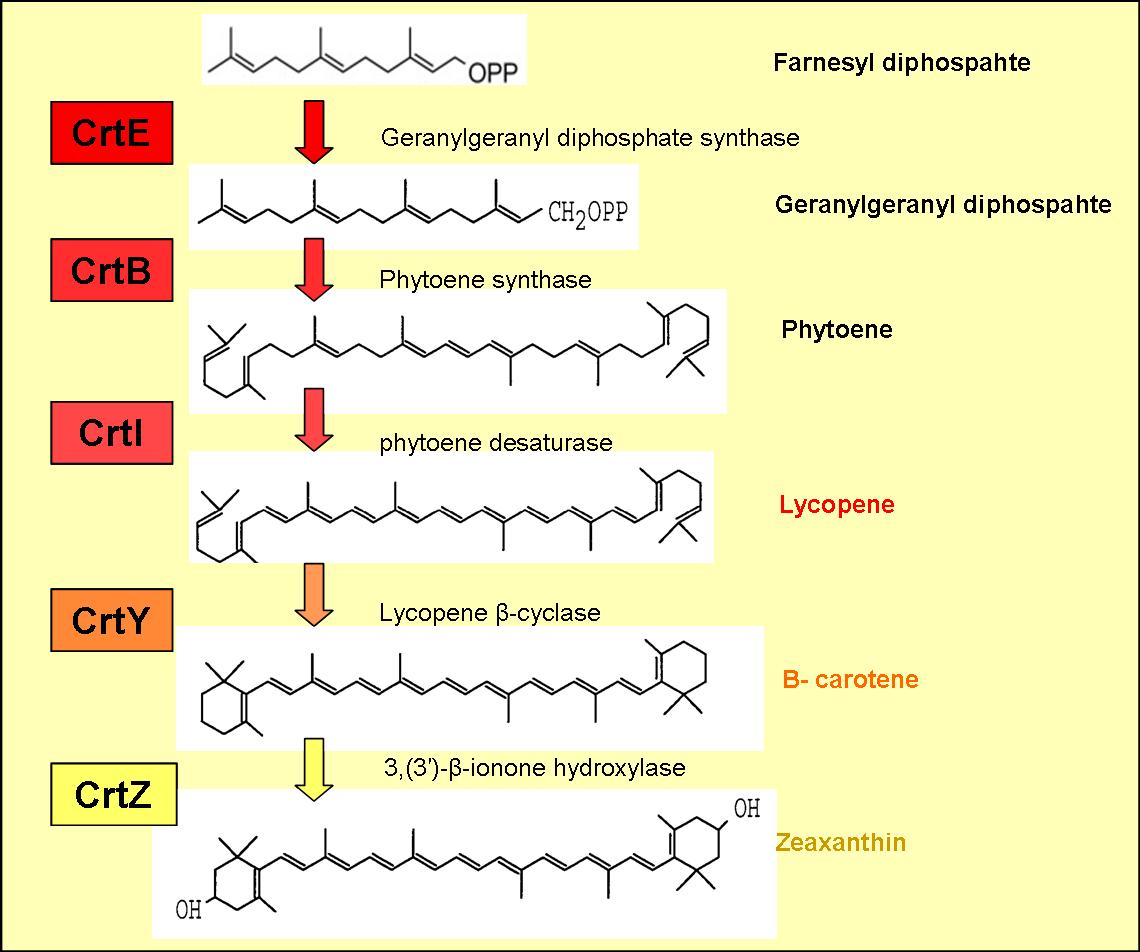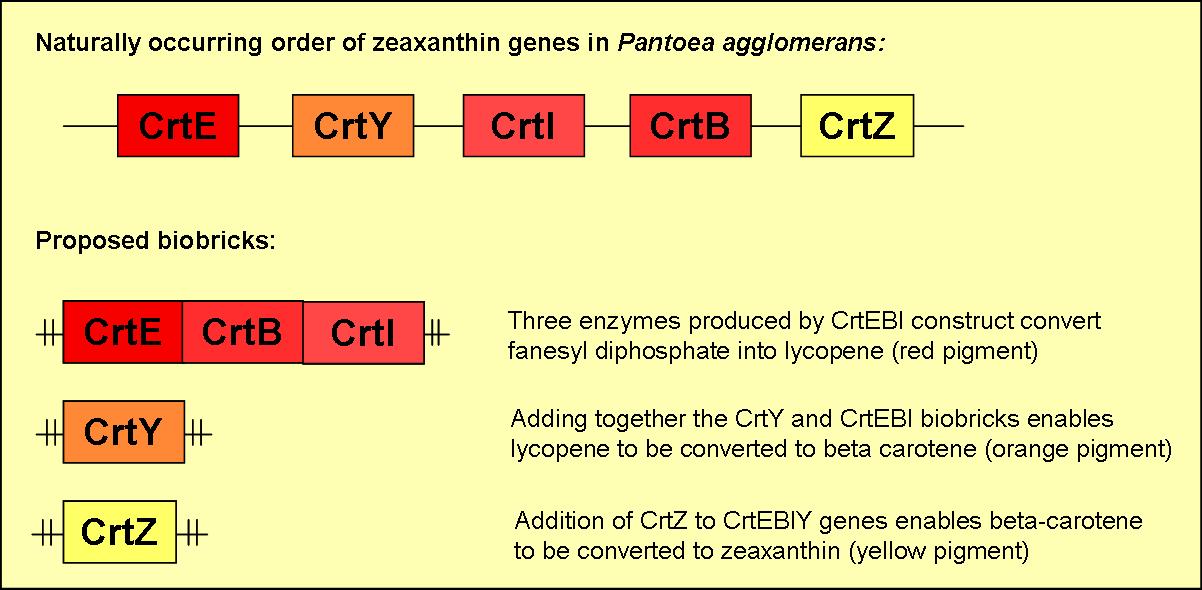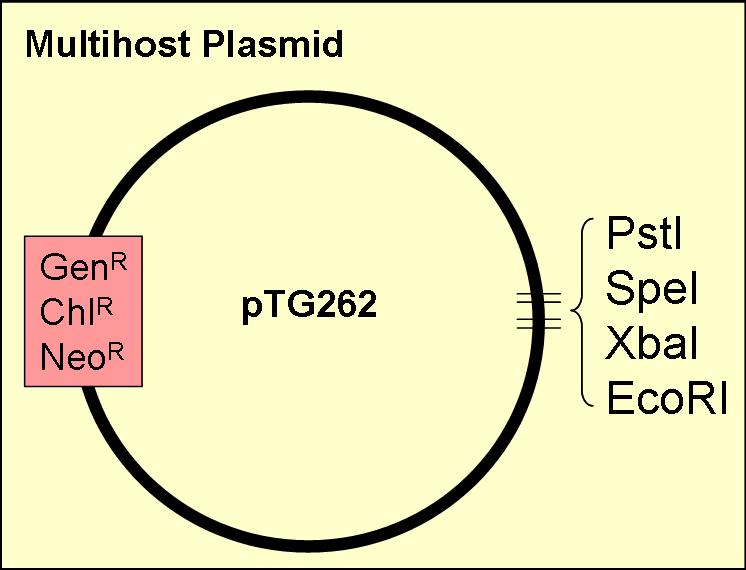Edinburgh/Yoghurt/Design
From 2007.igem.org
Introduction | Applications | Objectives | Design | Modelling | Wet Lab | References
Colour Production
The zeaxanthin operon is naturally found in many plants and bacteria. The operon encodes five genes, which enable the production of the yellow pigment zeaxantin.
The five genes present in the zeaxanthin operon are:
- CrtE
- CrtB
- CrtI
- CrtY
- CrtZ
The enzymes encoded by these genes and the products formed are displayed in figure .
Lycopene
The genes CrtE, CrtB and CrtI produce lycopene from farnesyl diphosphate (an intermediate in the mevlonate pathway).
Lycopene is a red pigment (found in tomatoes), which also has extremally powerful antioxidant properties and may possibly help protect you from cancer.
B-carotene
B-carotene is produced by cyclising lycopene, which is carried out by lycopene B-cyclase encoded by the gene CrtY (see figure )
B-carotene has an orange pigmentation and is responsible for the colour of carrots, winter squash and several other vegetables. The pigment can be stored in the liver and converted to Vitamin A, a form of retinol, required for sight.
zeaxanthin
Addition of CrtZ to the CrtEBIY construct enables the hydroxylation of B-carotene (by ) to zeaxanthin, which is a yellow pigment.
Introduction | Applications | Objectives | Design | Modelling | Wet Lab | References


